Consider three flasks in diagram below. Assuming that connecting tube has negligible volume and all three falsks are at same temperature.
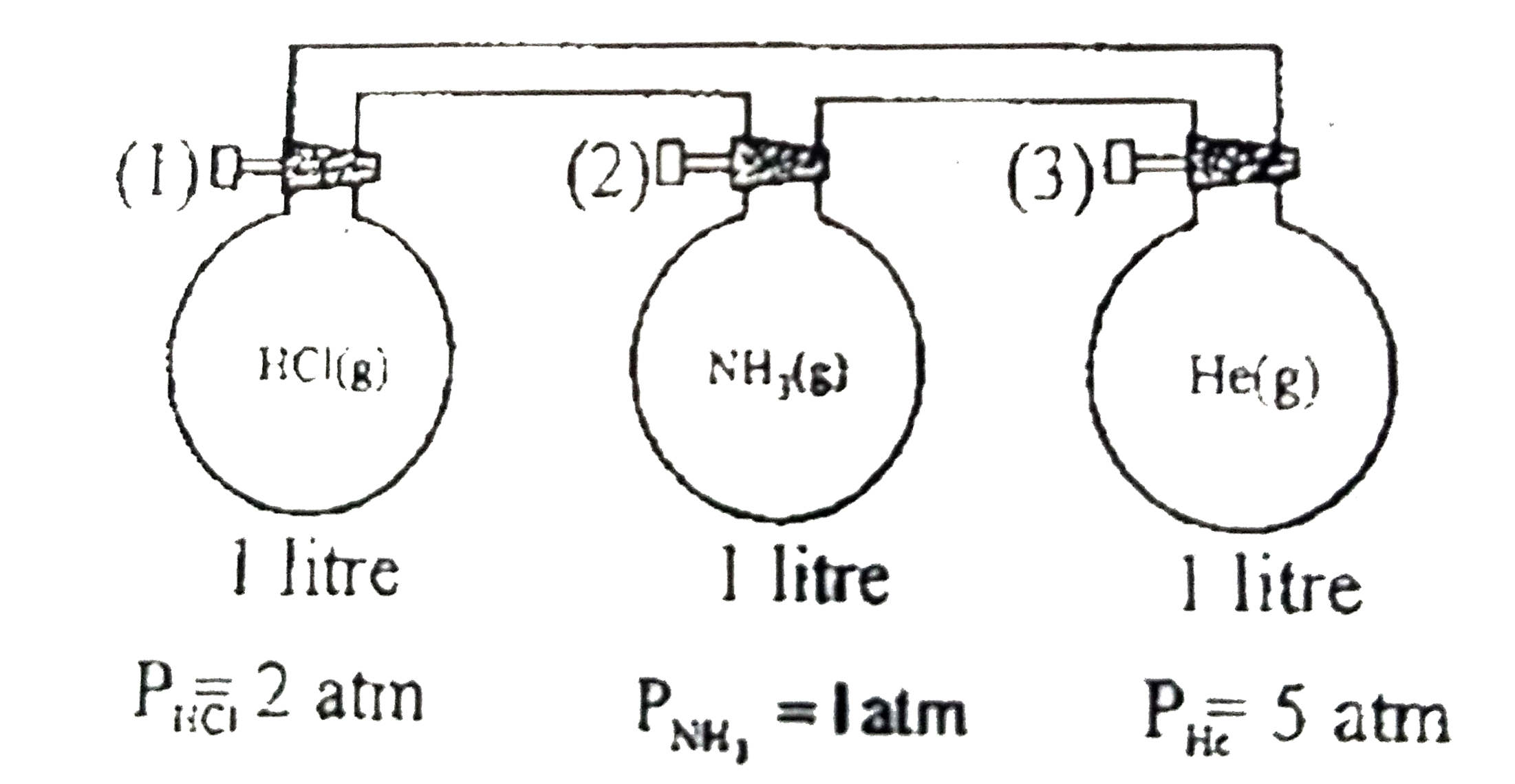
If all three stopcocks are opened then select correct option(s):
PHCl=23atm
PNH3=13 atm
P'→tal=2 atm
PHe=53 atm
PHe=5×13=53 atm
PNH3=0atm
PHCl=12×23=13 atm
Ptotal=53+!3=2atm
Topper's Solved these Questions
- TEST PAPERSBook:BANSALChapter:TEST PAPERSExercise:CHEMISTRY PART (A)
Explore 14 Videos
- TEST PAPERSBook:BANSALChapter:TEST PAPERSExercise:CHEMISTRY PART (B)
Explore 1 Video
- TEST PAPERSBook:BANSALChapter:TEST PAPERSExercise:Chemistry PART D
Explore 4 Videos
- SOLUTIONSBook:BANSALChapter:SOLUTIONSExercise:Exercise4
Explore 32 Videos
- THERMOCHEMISTRYBook:BANSALChapter:THERMOCHEMISTRYExercise:Exercise 4
Explore 15 Videos
Similar Questions
A liquid rises to same heigt in three capillaries at same temperature. Select the correct option(s)
View SolutionThe figure given below shows three glass chambers that are connected by valves of negligible volume. At the outset of an experiment, the valves are closed and the chambers contain the gases as detailed in the diagram. All the chambers are at the temperature of 300K and external pressure of 1.0atm.
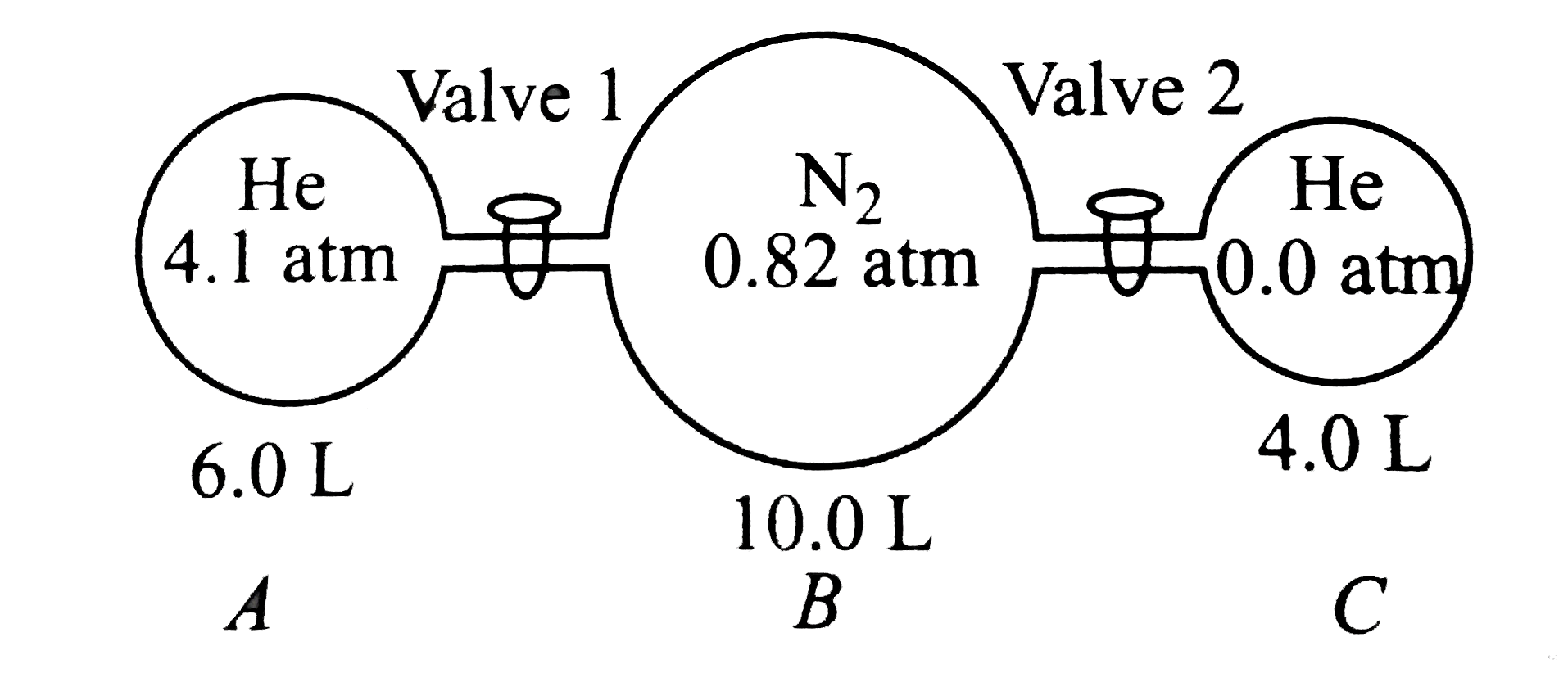
What is the total pressure in chamber B after valve 1 is opened?
View Solution
Knowledge Check
Consider three flasks in diagram below. Assuming that connecting tube has negligible volume and all three falsks are at same temperature.
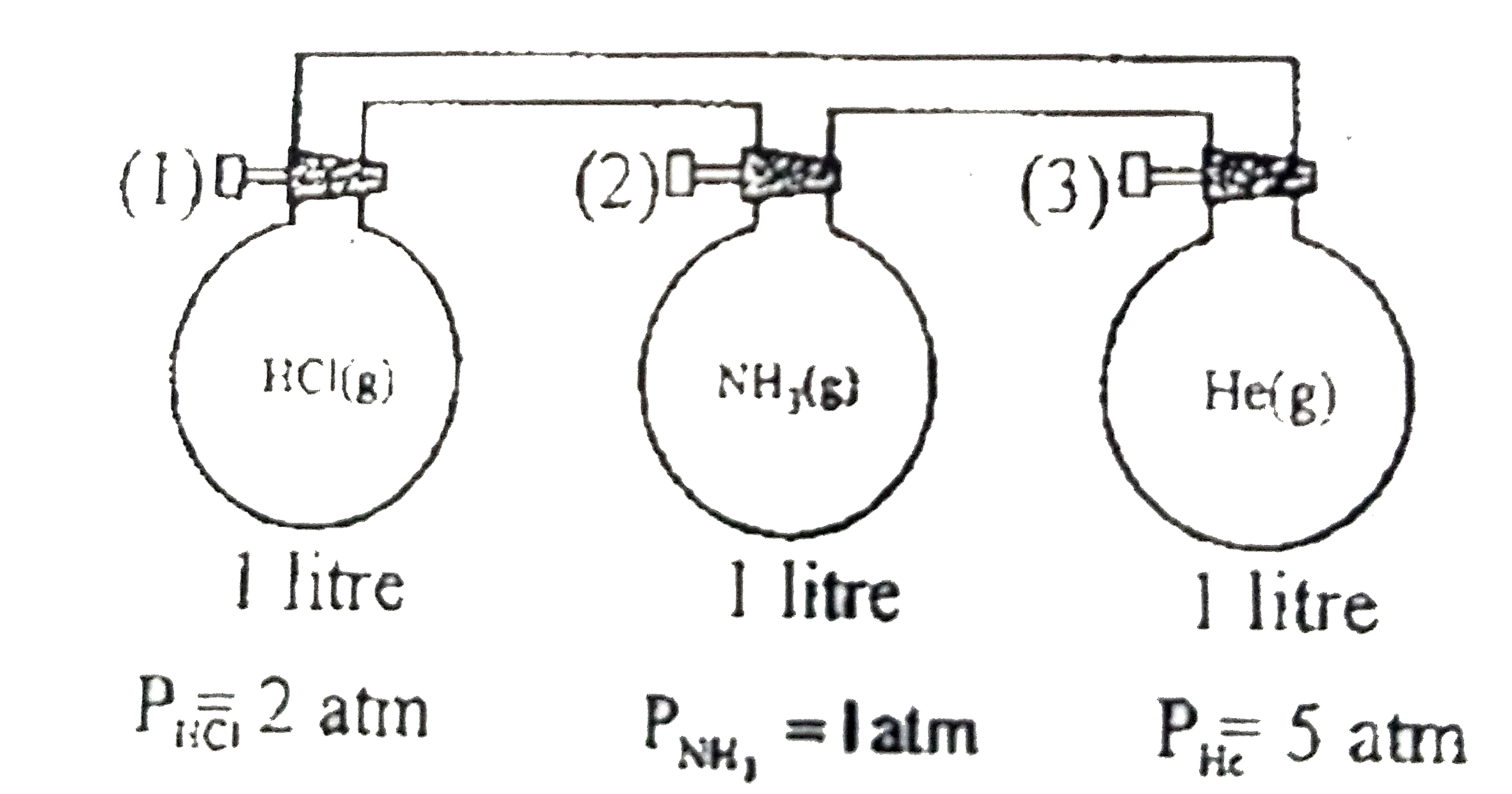
If only 1 and 2 stopcocks are opened then select correct option(s).APHCl=12 atmBPNH3=0 atmCPNH3+PHCl=12 atmDPHe=5 atmA liquid rises to same heigt in three capillaries at same temperature. Select the correct option(s)
AThe weight of liquid in capillaries may not be equalBThe radius of meniscus are equalCThe capillaries must be cylindricalDThe hydrostatic pressure at the base of capillaries is equalThere are three closed containers in which equal amount of the gas are filled.

If the containers are placed at the same temperature then find the correct options :APressure of the gas is minimum is (III) containerBPressure of the gas is equal in (I) & (II) containerCPressure of the gas is maximum in (I)DThe ratio of pressure in II and III container is 3:4
Consider the arrangement of bulbs shown in the drawing. Each of three bulbs contains a gas at pressure shown. What is pressure of system when all stopcocks are opened. Assuming that temperature remain constant. (Neglect the volume of capollary tubing connecting bulbs)

View SolutionTwo glass bulbs A (of 100 mL capacity), and B (of 150mL capacity) containing same gas are connected by a small tube of negligible volume. At particular temperature the pressure to A was found to be 20 times more than that in bulb B. the stopcock is opened without changing the temperature. the pressure in A will:
View SolutionThe diagram given below shows three glass chambers that are connected by valves of negligible volume. In an experiment, the valves are closed and initially the chambers contain the gases as given in the diagram. All the chambers are at fixed temperature of 300K.
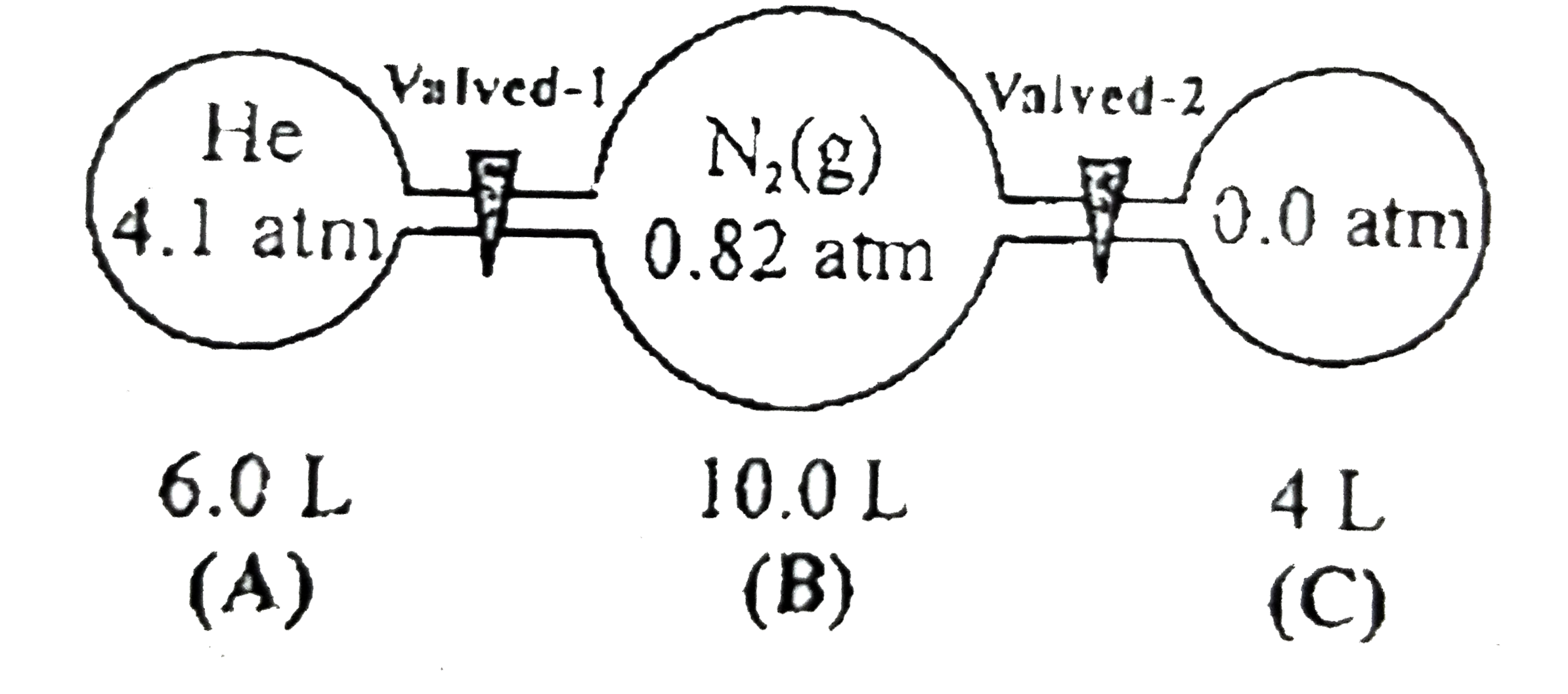
Whihc of the following is correct relation between the average velocity of gas molecule in chamber A and B before valve-1 is opened.
View Solution
Inifinite number of flasks are connected to one another as shown above. The volume and pressure in each flask vary as shown. The stopcocks are initially closed. The common pressure, when all the stopcocks are opened, is :( Assume constant temperature )
View SolutionThe diagram given below shows three glass chambers that are connected by valves of negligible volume. In an experiment, the valves are closed and initially the chambers contain the gases as given in the diagram. All the chambers are at fixed temperature of 300K.
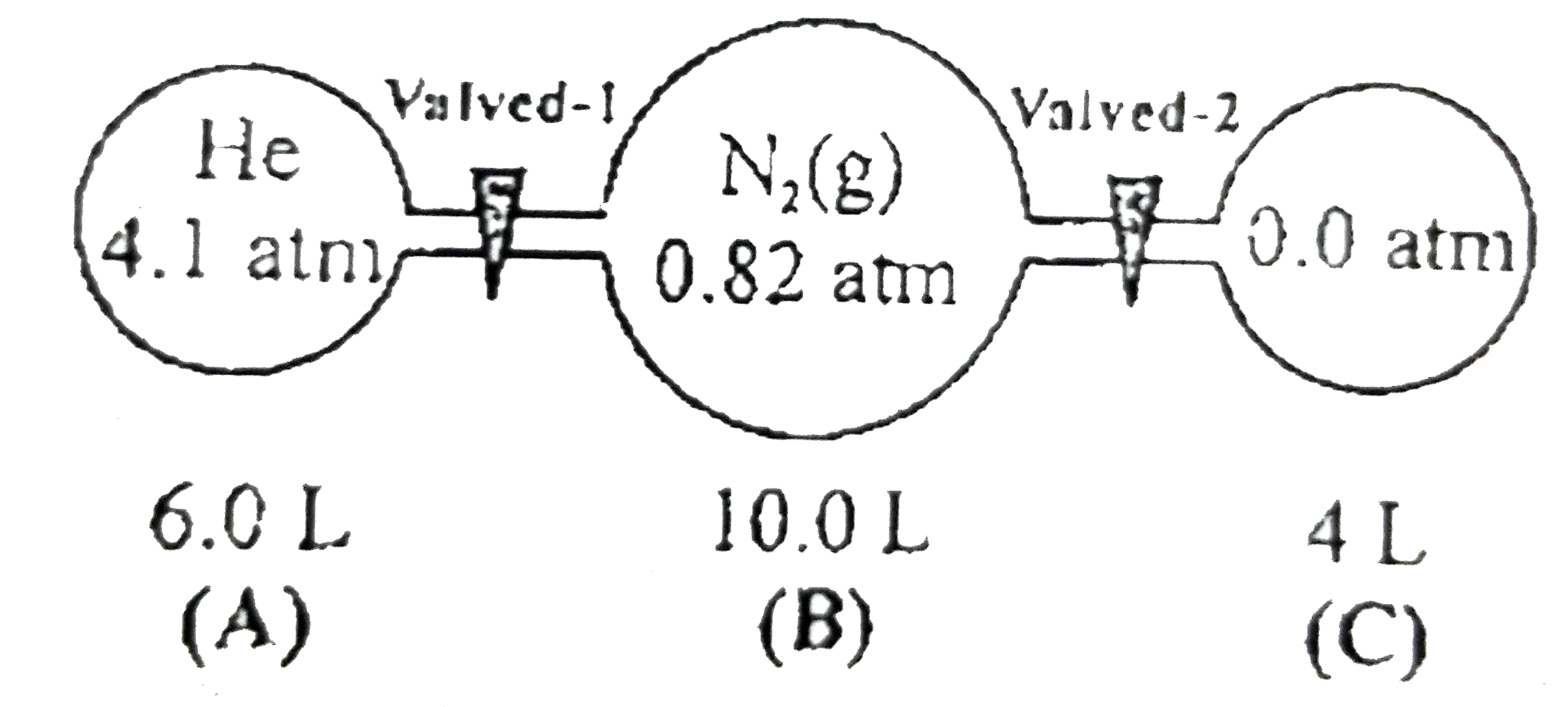
Which of the folliwng represents the total translational kinetic energy of all the gas molecules after both valves are opened.
View Solution
